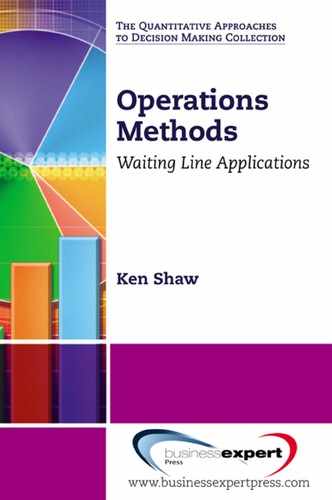Book Description
The intent of this book is to help business practitioners and students expand their knowledge of how waiting line analysis can be used to address situations beyond the simple examples they were presented in basic operations courses. Throughout the book, practical examples are given and worked out to aid in understanding the material presented. Some emphasis is given to the caveats in applying waiting line theory and the importance of being aware of the assumptions used in developing that theory. The first chapters begin with a review of those simple examples and the terminology used for waiting line processes. Readers are assumed to have basic familiarity with the use of probability distributions and Excel analysis tools. Those readers wishing to refresh their knowledge are provided references for doing so. Following chapters cover more complex concepts related to multiple server situations, less common arrival and service distributions, limited population applications commonly used for maintenance activities, cost trade-offs between adding service capacity versus process improvements, and manufacturing applications. The final chapters deal with the important topic that waiting line theory only predicts average performance, not the variability around that average. To gain knowledge about variability for evaluation of best and worst-case scenarios, the use of simulation is required. Readers are introduced to how simulation using Excel tools can be set up for several waiting situations. Sample programs are provided that can be modified to address particular situations.
Table of Contents
- Cover
- Title Page
- Copyright Page
- Abstract
- Contents
- List of Examples
- Preface
- Introduction
- Chapter 1: Concepts, Probabilities, Models, and Costs
- Chapter 2: The Basics—Single-Channel, Single-Phase Model
- Chapter 3: The Basics—Multiple-Channel, Single-Phase Model
- Chapter 4: More Complex Single-Channel Models
- Chapter 5: More Complex Multiple-Channel Models
- Chapter 6: Managerial Considerations
- Chapter 7: Useful Tools and Simulation Methods
- Appendix A: Glossary
- Appendix B: Symbol Definitions
- Appendix C: Multiple-Channel Application Data
- Appendix D: Simulation Information
- Notes
- References
- Announcing the Business Expert Press Digital Library
